We are always working on a variety of projects in the archaeology lab. Here are just a few of the interesting artifacts that staff and volunteers have recently encountered from Deapolis Village (32ME5) and Alderin Creek (32ME4). Both sites are in Mercer County near Stanton.
This ice glider is from Deapolis Village. Mandan people lived at this village in the early 1800s. The ice glider is made from a bison rib bone and is decorated with incised marks. Ice gliders are used to play a game of dexterity. (To learn more about ice gliders, check out Archaeology Collections Manager Ashenafi Zena’s blog.) This object was photographed and cataloged in preparation for an upcoming exhibit loan.
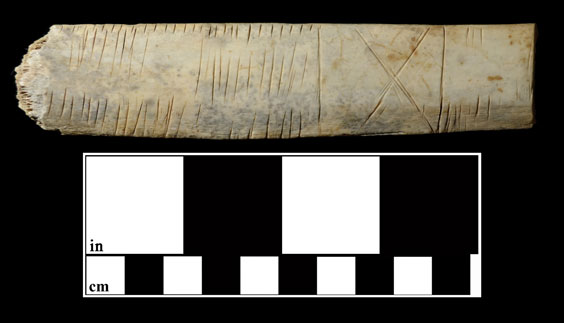
An ice glider from Deapolis Village. SHSND AHP 2000.1.503
These gunflints are also from Deapolis Village and would have been used with flintlock muskets or rifles. The gunflint on the far left looks like it was reused, possibly as a scraper for processing hides. If you look closely, you can see that someone worked (chipped away) part of the edge to shape it. These were photographed by one of our volunteers who is helping us document artifacts from many collections. Artifacts from Deapolis Village were collected in the 1950s.

Left: Gunflints from Deapolis Village. SHSND AHP 86.226.14578-14580
Right: A close-up of the reused gunflint. The red arrows point to areas where it has been reworked, possibly for use as a scraper for processing hides.
Most of our volunteers are currently helping us repackage artifacts from Alderin Creek. The artifacts were excavated in 1968 as part of a state highway project. We are rehousing the artifacts in preparation for future study—this collection has not yet been completely analyzed.
Alderin Creek is likely either a Hidatsa or Mandan village and was occupied sometime between 1525 and 1600. We have finished rebagging and reboxing most of the bone tools and ornaments, like this bead.
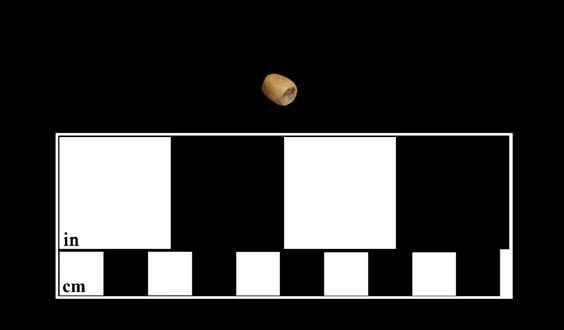
A bone bead from Alderin Creek. SHSND AHP 16000 X109 Fill
These two items are wrist guards used by archers to protect their arms.
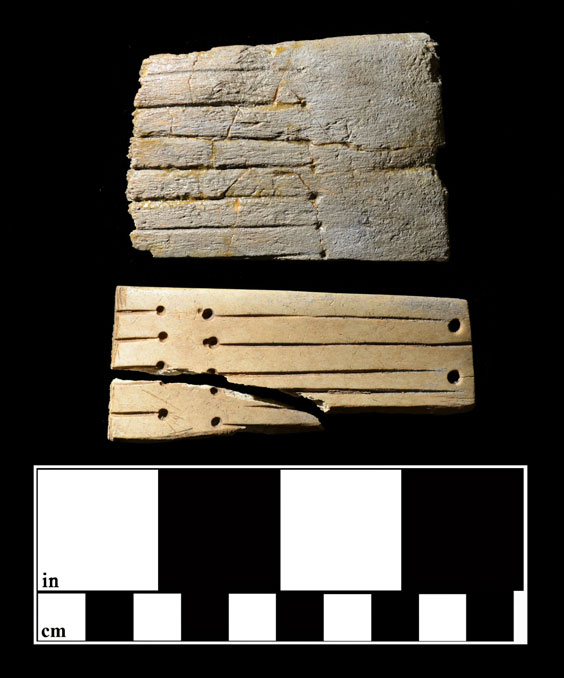
Bone wrist guards from Alderin Creek. SHSND AHP 16000 X105 F200 & X104 Fill
Bone awls like this one were used to puncture hides and leather so that thread or sinew could be sewn through the holes to make clothes, shelter (such as tipis), and containers (like parfleche bags). There are many bone awls in this collection that are still quite sharp.
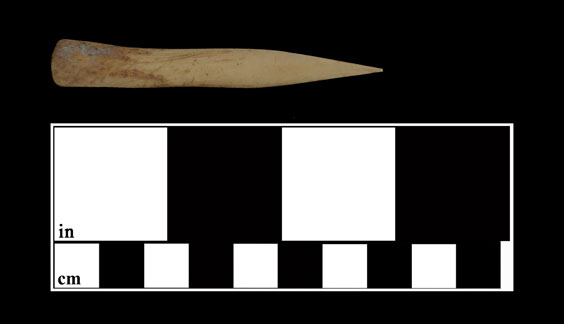
One of many sharp bone awls from Alderin Creek. SHSND AHP 16000 X103 F212
This bone fishhook is quite impressive—someone was ready to catch a good-sized fish.
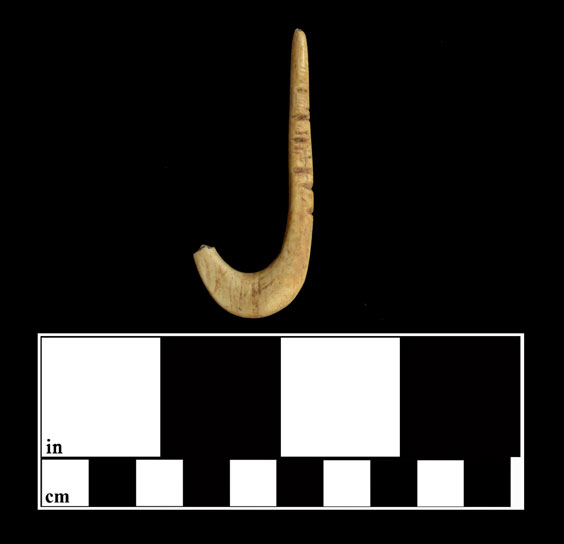
A large bone fishhook from Alderin Creek. SHSND AHP 16000 X114 Fill F132

